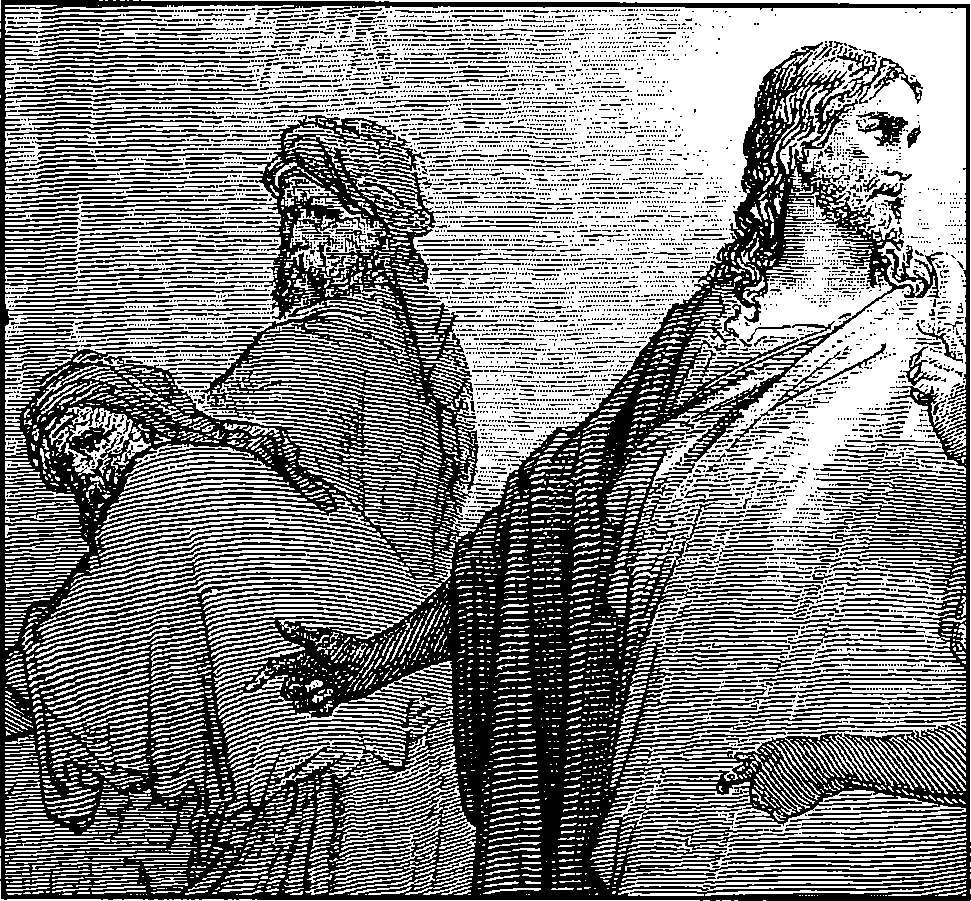The Conversion of Nathanael
An Expansion of John 1:43-51
Nathanael was a devout Jew with the highest of ethical standards.1 He was aware of the distinction between himself and most of his fellow Israelites. Rising above the expected always takes special effort, and Nathanael clearly recognized this. He also possessed the character trait of healthy skepticism.
When his friend Philip proclaimed, “I have found the messiah!,” Nathanael mused within his heart if this could really be so. Then, upon finding out that this popular teacher was from Nazareth, Nathanael’s musings took an audible form in his query “Can anything good come out of Nazareth?” A town of such low reputation hardly seemed like the appropriate residence of Israel’s great deliverer. Rather than debate with his skeptical friend, Philip’s brief response “Come and see” echoed the invitation given to all truth seekers down through the ages.
Nathanael decided to do so, but not before prayer and meditation. What better place for this than under the protective canopy of his favorite fig tree? He went there often, in secret, to contemplate the scriptures and the promise of a coming messiah. How often had he sought the refuge of its cool umbrella of shade! It was the perfect place to ponder the things of God.
The next day Nathanael, somewhat reluctantly, accompanied Philip to find and meet Jesus. As they walked on, they noticed a crowd in the distance; Philip knew the focus of that crowd would likely be the Master, so they walked on. Sure enough, Philip saw Jesus ministering to a group of disciples, and, pointing, he said to Nathanael “that’s him, over there!”
Nathanael mustered some courage and walked directly toward Jesus. He was surprised to notice that, despite the throng, Jesus seemed to be looking directly at him. Not only that, he was also smiling and beckoning Nathanael to come closer.
At just a few paces away Jesus pointed to Nathanael and proclaimed “Behold, an Israelite indeed, in whom is no guile.” Nathanael stopped in his tracks, inwardly wondering how this man could know anything at all about him. Nathanael knew well he was devoted and disciplined, but how did Jesus know this? So, he asked “How do you know me?”
Jesus beckoned him to come closer still, until they stood side by side. The Savior then put his arm around Nathanael’s shoulder in a gesture of affection. “I saw you” Jesus whis pered. “What do you mean you saw me?” Nathanael inquired. “Under your favorite fig tree, yesterday. I saw you there.”2
Nathanael quickly bolted back, startled. How could this be so? It was a private moment in a private setting. “What did you see?” Nathanael wondered aloud. Jesus quietly said “Your prayers were heard, and today your prayers have been answered.”

Christ with Two Disciples.
Nathanael’s skepticism now found no room in his heart. He fell to his knees and proclaimed “Rabbi, you are the son of God. You are the king of Israel,” demonstrating Nathanael’s joy, as well as his astute knowledge of the messiah’s divinely appointed roles.
Without missing a beat, the Lord challenged Nathanael with “Because I said to you ‘I saw you under the fig tree’ do you believe?” The Master’s quick question kept Nathanael on the proper mental course, allowing no time for him to exult in actually finding, and personally meeting, the promised messiah.
Then, with Nathanael’s mind and heart racing, Jesus as sured him that “hereafter, you shall see heaven open, and the angels of God ascending and descending upon the son of Man.” The Lord thus expanded Nathanael’s awareness of the messiah’s kingly role over Israel to a broader picture of his future regal role of blessing the entire human family.
Thus began Nathanael’s ministry as one of the chosen twelve. A devout Israelite, with a healthy skepticism, was forever changed – as we all are – by an encounter with the Son of God.
– Robert Brand
(1) Nathanael is also referred to as Bartholomew. See Luke 6:14.
(2) “Under the fig tree” was an idiomatic phrase also used by rabbis to describe meditation on the scriptures, but its use in this context, and Nathanael’s reaction, indicate a literal application of the Lord’s super natural power.
Editor note: This article makes the encounter to be a day after Phillip told Nathanael of Jesus, and when Jesus met him the article puts the word “yesterday” in Jesus’ mouth. This supposition of an added day is not in the passage, which otherwise marks each day individually. The narrative simply says that when Jesus found Phillip, he in turn called Nathanael, and (presumably the same day) he came to see Jesus as well. In this regard it parallels the experience of Andrew and Simon earlier in the same chapter.
